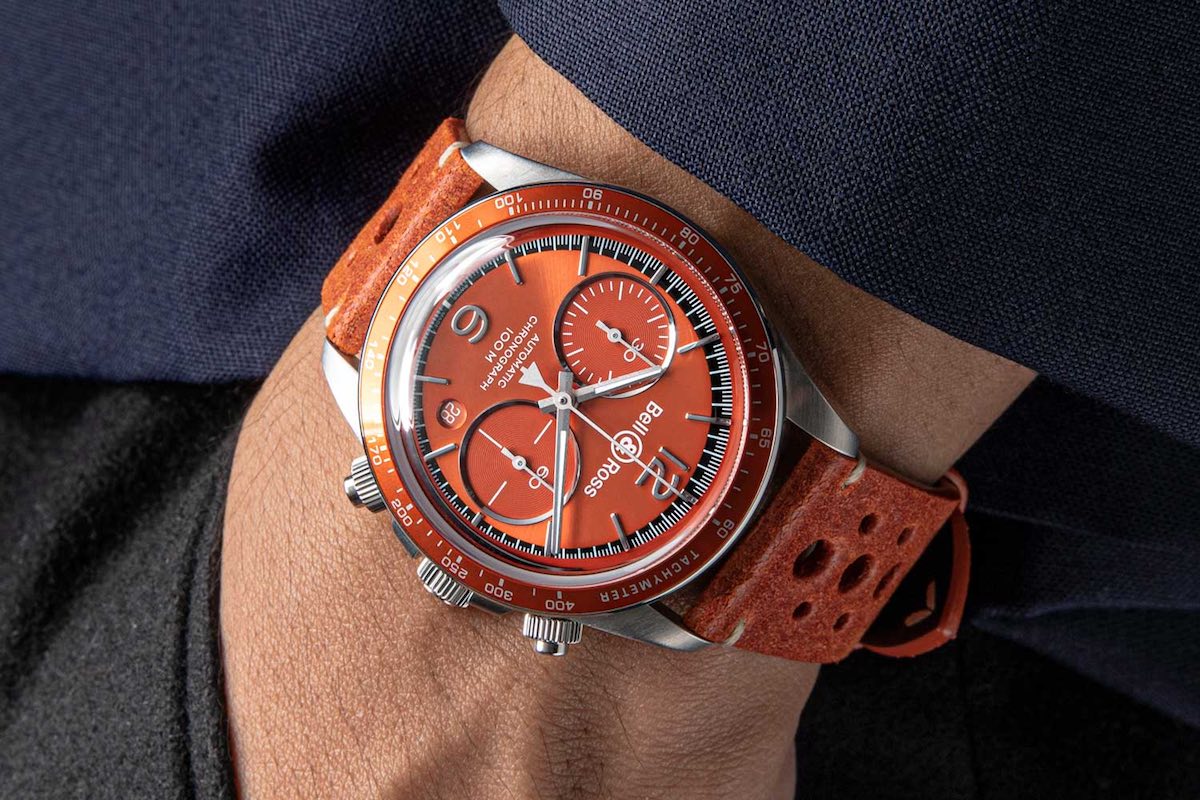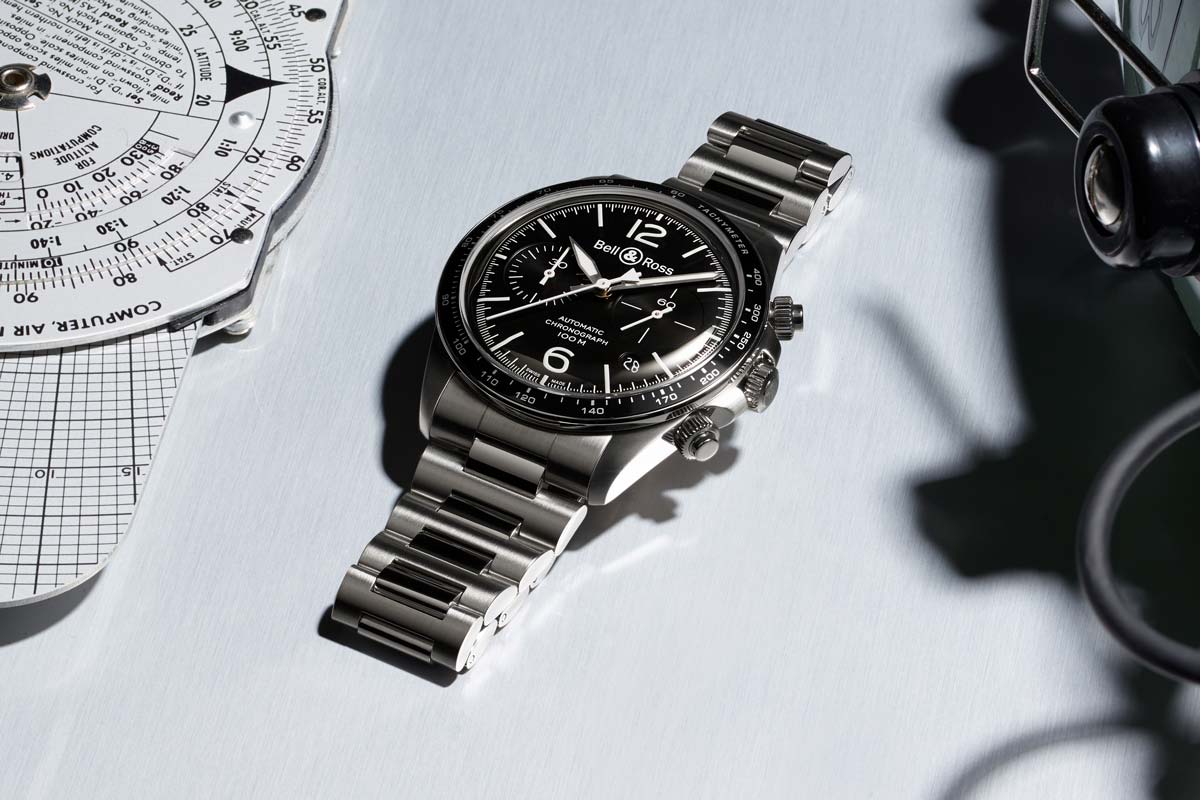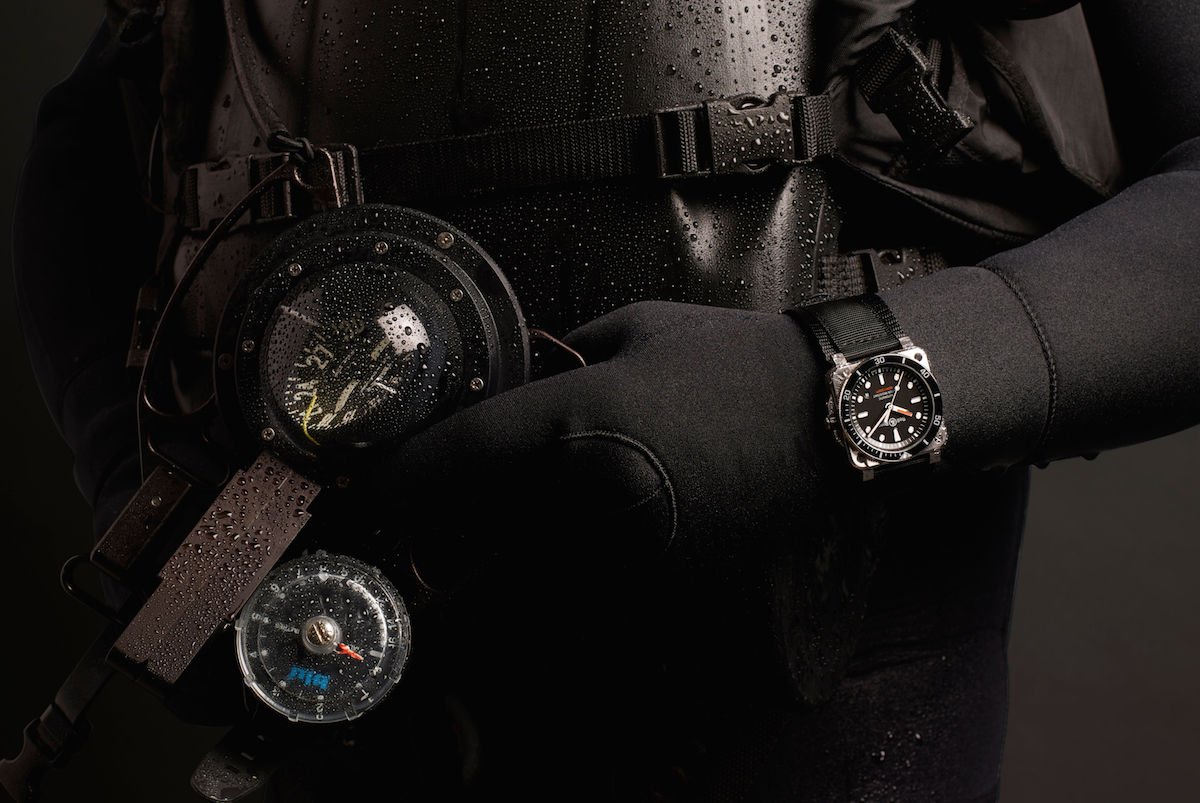Introducing the Bell & Ross Bellytanker Chronographs #NegroniTime for The Rake and #SpritzoClock for Revolution
Bell & Ross’ timepieces inspired by our favourite aperitifs are the perfect harbingers of a return to more convivial times.

What I think we missed most in 2020 was the human contact. Spending time with friends, enjoying their physical presence, their warmth of spirit, their conviviality,” says Carlos Rosillo, co-founder of Bell & Ross. “For me, 2021 will be a year to remake these bonds, to luxuriate in the company of my fellow men with a full understanding and deep appreciation of their company. These watches created for Revolution and The Rake are meant to be a celebration of this new year of optimism and hope; one filled with friendship, compassion and companionship.”
He continues, “If you look at the name Bell & Ross, the central motif is the ampersand. This is derived from the ligature for the Latin word et, which expresses a partnership between equals. It means that together, we are stronger. And it was very much in this spirit that these two vibrant-coloured Bellytanker Chronograph watches were created.



“Of course, in terms of colour, both watches are inspired by two of the most iconic Italian cocktails, the Negroni and the Spritz, and what they symbolise in terms of good cheer, celebration and friendship, especially leading to the wonderful days of summer. But at the same time, I think these beautiful vivid hues with the sunray motif on the dials that are treated to have an almost liquid effect are power totems of positivity and optimism. That’s why we wanted them to be the very first watch launches of 2021 — as our declaration to the world that things will get better, and there is hope, joy and happiness on the road ahead, and we are not so very far away.”
Emblem of a New Attitude

The Bell & Ross Bellytanker Chronograph #NegroniTime for The Rake (©Revolution) 
Nicknamed #NegroniTime by us, this watch is a symbol of solidarity throughout the darkness of last year (©Revolution) 
Matt Hranek wearing the Bell & Ross Bellytanker Chronograph #NegroniTime for The Rake





Legendary film director and sybarite Orson Welles discovered the Negroni in 1947 while working as a correspondent for the Coshocton Tribune, and described his affection for the beverage based on the fact that it had bitters that were excellent for the liver, and gin which was bad for it, and as such, “they balanced each other out”. In the last decade, the Negroni, which was somehow lost during the rise of mixology culture, has staged a major resurgence. Says Matt Hranek, author of a book on the Negroni which will be released this year, and co-creator of the Negroni tweed with Douglas Cordeaux of the Fox Brothers, “I look back at the Negroni and see it staging a return following the financial crisis of 2008. I think that people were searching [for] more authentic timeless things to connect with, and the Negroni, because of its long, enduring history and because it is a genuinely great-tasting and uplifting cocktail, became the drink of choice for many of us.”
Says Angel Ramos, founder of the tailoring and craft brand 18th Amendment, “The Negroni became a statement that you loved things that were authentic. That you wanted to have cocktails in places where you could have conversations, that you loved dressing in a tailored jacket because it was a sign of respect to your company and your environment, that you enjoyed a cigar but never a cigarette. It was about an attitude of life that took classic values and connected them to the modern world, and the Negroni was a kind of bridge.”
Symbol of Resilience and Hope

Nicknamed #NegroniTime by us, this watch is a symbol of solidarity throughout the darkness of last year (©Revolution) 
Andy Poupart and his wife, Michèle Free 
The dial uses both a sunray finish and many layers of lacquer to create an almost liquid-like hyperlush effect. 
The Bell & Ross x The Rake and Revolution Bellytanker “Dusty” Chronograph from 2019 (© Revolution) 
The Bell & Ross x The Rake and Revolution Bellytanker Chronograph “El Mirage” (© Revolution) 
The Bell & Ross Bellytanker Chronographs #SpritzoClock for Revolution, #NegroniTime for The Rake, the Bellytanker “Dusty” and “El Mirage” chronographs for The Rake x Revolution (© Revolution) 
The watch comes on a Negroni-coloured suede rally strap. 
Nicknamed #SpritzoClock, this watch is an expression of hope for all there is to come.(©Revolution) 
Wei wearing his Bellytanker Chronograph #SpritzoClock for Revolution (©Revolution) 
Nicknamed #SpritzoClock, this watch is an expression of hope for all there is to come.(©Revolution) 
Matt Hranek wearing the Bellytanker Chronograph #SpritzoClock for Revolution 
At lunch with Gritti Palace’s beloved general manager Paolo Lorenzoni (©Revolution) 
Venice in winter, solace away from home (©Revolution)















In 1919, the enterprising Barbieri brothers of Padua introduced Aperol, a fortified bitter with a sweet taste and jewel-like orange colour, and by the ’50s, it had brought about an evolution in the Veneto Spritz, which now consisted of this bitter, prosecco and sparkling water. And it is this succulent concoction that is the primary source of my hydration and also the libation I associate most with the transcendent city of Venice. My standard operational practice upon arrival is to enjoy one or three of these magnificent concoctions — flawlessly prepared by head barman Cristiano Luciani — with my dear friend, the Gritti Palace’s beloved general manager Paolo Lorenzoni, before I make my way to the ethereal Hemingway Suite. Indeed, there is nothing to me more meditatively bucolic than to read Somerset Maugham on the terrace of the Gritti, where the author was known to ensconce himself enjoying La Serenissima’s signature beverage. My favourite ritual, upon viewing Titian’s life-changingly epic Assumption of the Virgin still found in situ at Santa Maria Gloriosa dei Frari, is to retreat to one of the many nearby cafes in quiet contemplation at the majesty of this seminal work with a Spritz and cigar.
Bell & Ross Bellytanker Chronograph #Spritzoclock for Revolution
As I explained my profound, unyielding affection for the Spritz, it became clear to Carlos Rosillo that we also needed to make a second watch in the colours of this fabled drink. In many ways, the two watches complement each other. Nicknamed #NegroniTime and #SpritzoClock by us, the former is a symbol of solidarity throughout the darkness of last year while the latter is an expression of hope for all there is to come. I can’t help but feel uplifted when I look at the gorgeous sunrise colour of the orange Spritz watch. The timepiece reminds me of human gatherings, such as the days I shared with my friend Ahmed “Shary” Rahman on the terraces and by the pool (strictly the one in the back of the hotel) at the Grand Hotel Tremezzo, which was the stop at the end of our vintage car rally that took us through the Alps. I even found a small kiosk down the road from the hotel which served Spritzes in the form of alcoholic ice slushies, which then became one of the hottest spots for congregation and conviviality during our trip.

The sunray treated Spritz dial has orange azure subdials and an orange date disc 
The watch strap has an orange, rally-style suede finishing with pin buckle 
The watches come with a WM Brown X WOLF Watch Roll, crafted in classic smooth brown leather and lined with a Negroni tweed. The roll features WOLF’s patented Watch Guards to keep your timepieces protected. (©Revolution) 
Bell & Ross Bellytanker Chronograph #Negronitime for The Rake 
Bell & Ross Bellytanker Chronograph #Negronitime for The Rake watch box and watch roll 
Bell & Ross Bellytanker Chronograph #Spritzoclock for Revolution 
Bell & Ross Bellytanker Chronograph #Spritzoclock for Revolution watch box and watch roll





- Limited edition of 50 pieces





